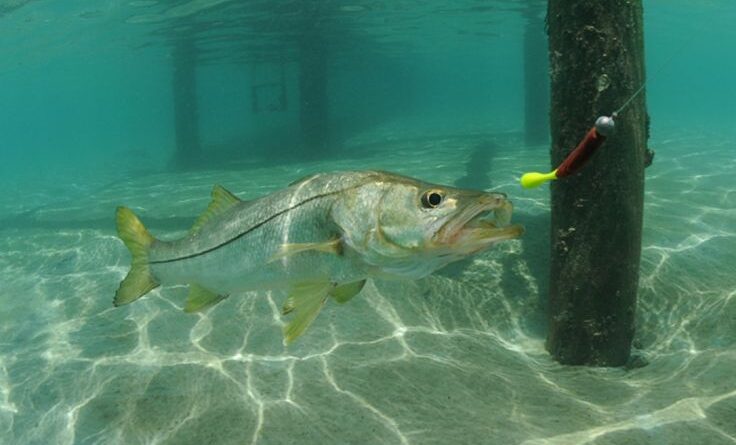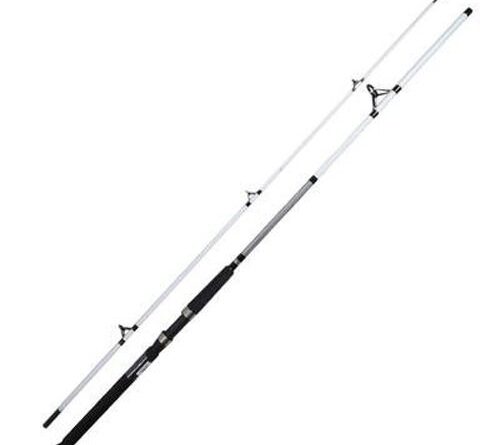Tarpon fishing, often hailed as the “Silver King” of the ocean, is an exhilarating pursuit that captivates the hearts of anglers worldwide. The sheer power, acrobatics, and size of the tarpon make it a prized catch among fishing enthusiasts. In this comprehensive guide, we will delve into the intricacies of tarpon fishing, exploring everything from its habitat and behavior to the techniques and gear required for a successful angling adventure.

Understanding the Tarpon
Habitat and Behavior
Tarpons, residing in both salt and brackish waters, are predominantly found in the Atlantic Ocean, the Gulf of Mexico, and the Caribbean Sea. These silver-scaled giants prefer coastal areas, estuaries, and bays, where they can easily access both saltwater and freshwater environments.
Known for their incredible strength and acrobatic displays, tarpons often leap out of the water during a fight, making them a challenging yet rewarding catch. They are also unique among fish species due to their ability to gulp air at the water’s surface, allowing them to thrive in oxygen-poor environments.
Best Practices for Tarpon Fishing
1. Seasonal Considerations
Timing is crucial when it comes to tarpon fishing. The peak season varies depending on the region, but generally, spring through early summer is considered prime time. During these months, tarpon migrates along coastal areas, providing ample opportunities for anglers to target them.
2. Location Matters
Identifying the right fishing spot is paramount for success. Look for areas with strong tidal currents, as tarpon are known to congregate in these areas to feed. Bridges passes, and flats are also popular locations, providing strategic positions for anglers to cast their lines.
3. Tackle and Gear
Given the size and power of tarpon, specialized gear is essential. A sturdy rod with a high-capacity reel spooled with a heavy braided line is recommended. Leaders should be abrasion-resistant, as tarpon possess rough mouths that can easily cut through standard fishing lines.
Techniques for Tarpon Fishing
1. Fly Fishing
Fly fishing for tarpon is a thrilling experience that requires skill and precision. Anglers use large, brightly colored flies to mimic the prey of tarpon. Accuracy in casting and presentation is crucial, as tarpon can be selective feeders.
2. Live Bait Fishing
Live bait is a tried-and-true method for tarpon fishing. Common bait includes mullet, crabs, and pinfish. When presenting live bait, it’s important to allow the tarpon to take the bait fully before setting the hook. Patience is key in this approach.
Conservation and Ethical Angling
While tarpon fishing is undoubtedly an exciting sport, it’s crucial to prioritize conservation efforts. Adhering to catch-and-release practices ensures the sustainability of tarpon populations. Proper handling techniques, such as minimizing air exposure and avoiding damage to the fish’s slime coat, contribute to the well-being of these magnificent creatures.
Frequently Asked Questions
How Large Can Tarpons Grow?
Tarpons can grow impressively large, with some specimens reaching lengths of over 8 feet and weighing more than 280 pounds.
What Is The Best Time Of Day To Fish For Tarpon?
The optimal time for tarpon fishing is during dawn and dusk when these majestic creatures are most active, actively feeding and moving.
Do Tarpons Migrate, And If So, When?
Yes, tarpons are known for their extensive migrations. They typically migrate to spawn in warmer waters during late spring and early summer.
Which Bait Is Most Effective For Tarpon Fishing?
Live bait, such as mullet or crabs, tends to be highly effective in enticing tarpon. Artificial lures, mimicking their prey, can also be successful.
How Challenging Is It To Catch A Tarpon?
Catching a tarpon can be challenging due to their strength and acrobatic maneuvers. However, with the right techniques and gear, it becomes an exhilarating pursuit.
Are There Catch-And-Release Regulations For Tarpon?
Yes, many regions enforce catch-and-release regulations to preserve the tarpon population. It ensures sustainable angling and conservation efforts.
Conclusion
In conclusion, tarpon fishing is not merely a sport; it’s an adventure that connects anglers with the raw power and beauty of one of the ocean’s most majestic creatures. By understanding the habitat, behavior, and best practices for tarpon fishing, anglers can enhance their chances of a successful and ethical angling experience.






